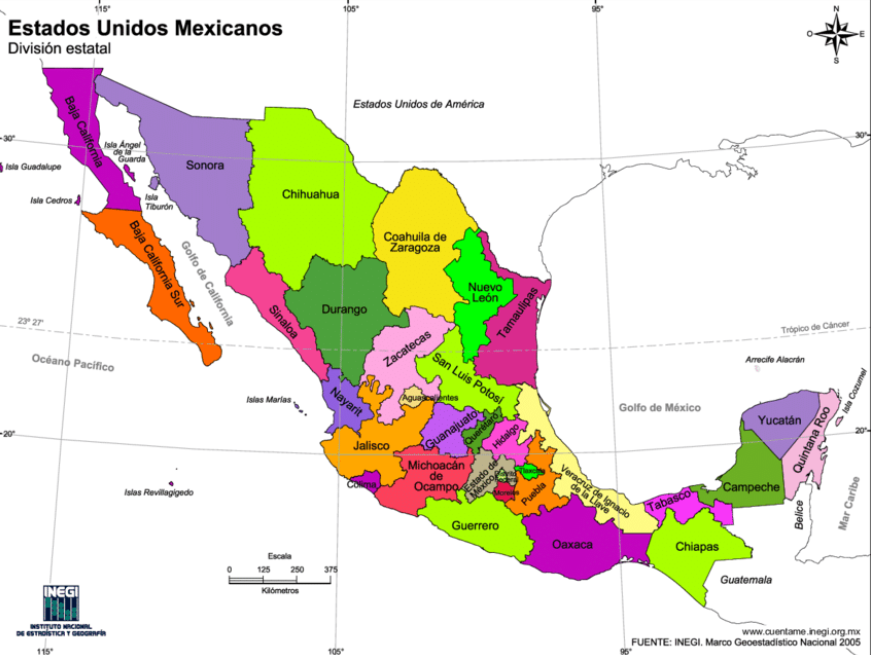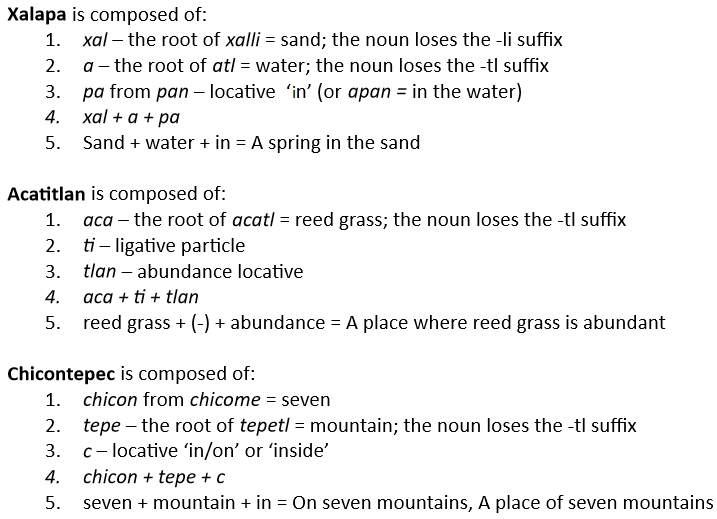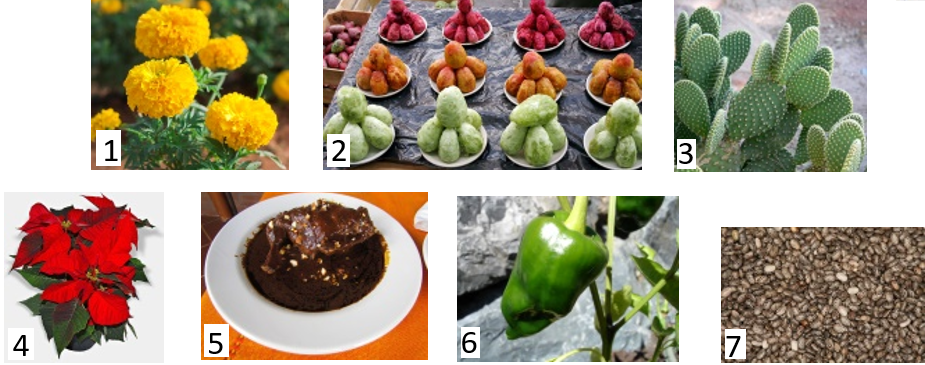Nahuatl language belongs to the uto-nahua language family. It is the most spoken of the 68 indigenous languages of Mexico. Nowadays, it has more than 1.6 millon native speakers who use its 365 varieties (INALI). Therefore, it is also called a language group. The speakers of nahuatl are distributed widely across the country and live in various states of the Mexican Republic, mostly in the states of Puebla, Veracruz de Ignacio de la Llave, Hidalgo, Guerrero, and San Luis Potosí (INEGI), that is, in the central part of Mexico.

It is worth noticing that the present-day name of the country and its capital city at the same time —Mexico— comes from Nahuatl and stands for ‘the site at the navel of the Moon’ (‘el lugar del ombligo de la Luna’, Gutierre Tibón 2017) or ‘the place where is adored the soldier Mexictli’ (‘lugar donde se adora a [el guerrero] Mexictli’, Gutiérrez Eskildsen 1987), just to mention two examples of its very diverse interpretations. Another interesting toponym is the ancient name of the City of Mexico, namely Tenochtitlan, which stands for ‘between red pricky pears, tough like stones’ (‘entre tunas rojas, duras como piedras’, Gutierre Tibón 2017). According to a legend, Huitzilopochtli, the god of war, pointed out the most appropriate place for the Mexicas settlement, which was where they would run into an eagle devouring a snake on a nopal tree. The mythological foundation of Tenochtitlan has been perpetuated in the national Mexican emblem (designed by F. Eppens Helguera, https://es.wikipedia.org/wiki/Escudo_Nacional_de_M%C3%A9xico).
The spread of Nahuas makes both their languages (liguistic variaties) and their habits diversify. The varieties of Nahuatl have different names which are used by the speakers themselves, e.g.: maseual tajtol, mexicano tlajtol, mexicanero, mexicatl, nauta, or pipil (the only variety out of Mexico, namely, in El Salvador). Among these varieties, but especially among the big dialectal areas —the East, Huasteca, the Center, and the West (see the map by Valiñas Coalla, 2020: 177-178)—, lexical, orthographic and phonetic differences can be observed.

Read more: Andrade Camacho, U., Hernández Osorio, R. & O. Valencia de la Cruz (2008) Altepetocayotl. Nombres geográficos de las regiones nahuas del Estado de Veracruz. AVELI, Xalapa; INALI – Instituto Nacional de Lenguas Indígenas, wwww.inali.gob.mx; INEGI – Instituto Nacional de Estadística y Geografía, https://www.inegi.org.mx/app/tabulados/interactivos/?pxq=LenguaIndigena_Lengua_03_d14640ee-16d4-4ba1-bcb1-6645762a6d6c; Gutiérrez Eskildsen, Rosario Ma. (1987) Vocabulario de Nahuatlismos. Companía Editorial Electrocomp, S.A. México, DF.; Tibón, Gutierre (1970, wersja elektroniczna 2017) Historia del nombre y de la fundación de México. Fondo de Cultura Económica, México.
Exercise 1:
Look at the map of Mexico below and find the states in which the Nahuatl-speaking population is the biggest.

Answer
Puebla, Veracruz (de Ignacio de la Llave), Hidalgo, Guerrero, San Luis Potosí.
Exercise 2
Nahuatl is an agglutinative language, which means that its words are composed of roots of two or more lexical units that make a new meaning together. To explain this feature, let’s see some examples of Nahua toponyms: Xalapa, Acatitlan, and Chicontepec.

Now it’s your turn. Following the examples above, analyze the following toponyms: Xaltepec, Xochimilco, Michapan, Coacalco, and Tenochnautla. You can use The Nahuatl Dictionary (https://nahuatl.uoregon.edu/). Then, compare your results with the answers in English. by clicking on the grey fields in the table below
| Xaltepec = | On a mountain of sand |
| Xochimilco = | In a field of flowers |
| Michapan = | In the river of fish |
| Coacalco = | In a snake house/ In the house of the snake |
| Tenochnautla = | A place of the four stones in shape of nopal |
Exercise 3
Some Mexican products’ names, not necessarily from the Nahua culture, come from the Nahuatl language. However, their Nahuatl names were transferred to other languages and cultures, with slight modifications. Investigate what products these are and what their names are in your language. Then, compare your answers to those in Nahuatl.
Check your answers by clicking the grey fields in the table.
| cacahuatl | cocoa |
| ahuacatl | avokado |
| chilli | chilli |
| chocolatl | chocolate |
Exercise 4
Among many popular products and dishes of Mexican origin, there are those that have Nahuatl names and, of course, in Spanish and other indigenous languages. Do you know them? Which Nahua names match the following images?
 |
Answers
Click on the gray fields in the table to check your answers.
| Id photo | Nahuatl name |
|---|---|
| 1 | Cempoalxochitl |
| 2 | Nochtli |
| 3 | Nopalli |
| 4 | Cuetlaxochitl |
| 5 | Molli |
| 6 | Chilli |
| 7 | Chia |

